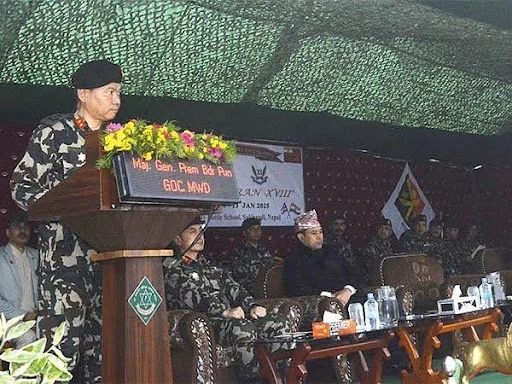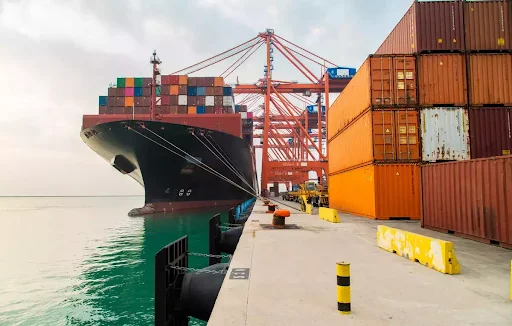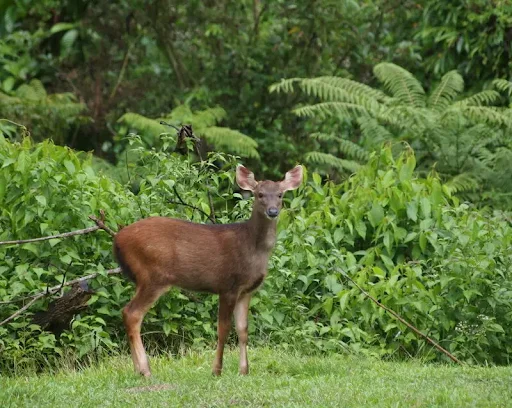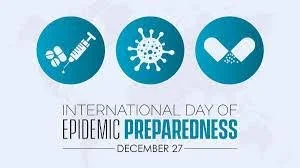UPSC GS 1
Winter seats of Char Dham
- News: The Uttarakhand government recently inaugurated the winter Char Dham circuit, aimed at drawing tourists to the state in the off-season winter months.

- Winter Seats of Char Dham:
-
- The Char Dham, consisting of Gangotri, Yamunotri, Kedarnath, and Badrinath, are revered Hindu shrines situated in the Garhwal Himalayas, Uttarakhand.
- During winter, when heavy snowfall makes access to these shrines difficult, the presiding deities are relocated to lower-altitude temples.
- Winter Abodes of Char Dham:
- Gangotri Dham: Winter Seat: Mukhba, Uttarkashi.
- Yamunotri Dham: Winter Seat: Kharsali, Uttarkashi.
- Kedarnath Dham: Winter Seat: Omkareshwar Temple, Ukhimath, Rudraprayag.
- Badrinath Dham: Winter Seat: Pandukeshwar, Chamoli.
- Significance of Winter Char Dham:
- These winter seats allow devotees to continue their pilgrimage during the colder months when the main temples remain inaccessible.
- It also aims to boost tourism in Uttarakhand during the off-season, contributing to the local economy.
Read also: The All India Household Consumption Expenditure Survey 2023-24 | UPSC
UPSC GS 2
World Audio Visual Entertainment Summit (WAVES)
- News: India will host the World Audio Visual Entertainment Summit (WAVES) for the first time from 5-9 February, 2025.
- World Audio Visual Entertainment Summit (WAVES):
- WAVES marks the inaugural global summit encompassing all facets of the Media and Entertainment (M&E) industry.
- It aims to unite industry leaders, stakeholders, and innovators to deliberate on prospects, challenges, trade promotion with India, and shaping the sector’s future.
- The summit will showcase India’s progress in animation, gaming, entertainment technologies, as well as regional and mainstream cinema.

- About WAVES India:
- Vision: Establish India as a leading global force in the Media & Entertainment domain, setting benchmarks for creativity, innovation, and global influence.
- Mission: Provide global Media & Entertainment leaders with unique investment opportunities through the exclusive platform of WAVES.
- Objectives:
- Transform WAVES into a platform that sparks ideas, drives discussions, facilitates knowledge sharing, and fosters collaborations among global M&E industry leaders.
- Boost India’s Creative Economy through Intellectual Property (IP) creation for both domestic and international audiences.
- Position India as an attractive and business-friendly investment hub.
- Strengthen India’s M&E infrastructure and enhance industry capacity to produce a globally skilled workforce.
- Adapt to and integrate emerging trends, advanced technologies, and ongoing transformations in the M&E sector.
UPSC GS 3
Pobitora Wildlife Sanctuary
- News: The forest department have formed anti-depredation squads (ADS) in the fringe areas of the Pobitora wildlife sanctuary in Assam’s Morigaon district to avoid human-animal conflict.
- Location and Establishment:
- Pobitora Wildlife Sanctuary is situated in the eastern region of Guwahati, Assam.
- It was officially established in 1998, covering an area of 48.81 square kilometres.
- Geographical Features:
- The sanctuary is part of the expansive Brahmaputra floodplains.
- It includes the Rajamayong Reserve Forest and the Pobitora Reserve Forest.
- The area is surrounded by several small hills, including Kasasila Hills, Hatimuria Hill, Boha Hill, Kardia Hill, Govardan Hill, and Panbari Hill.
- Key Highlights:
- Pobitora Wildlife Sanctuary is renowned for hosting the highest density of Greater One-Horned Rhinoceroses in India.
- It has played a vital role in the Indian Rhinoceros Vision 2020 (IRV) by serving as a source population for rhino translocation. Eight rhinos from Pobitora were successfully introduced into Manas National Park under this program.
- Fauna:
- The sanctuary’s grasslands provide habitat to various species, including the Greater One-Horned Rhinoceros, Wild Water Buffalo, Monitor Lizard, and Wild Boar.
- Flora:
- Approximately 72% of Pobitora comprises wet savannah vegetation, featuring species like Arundo donax, Erianthus ravennae, Phragmites karka, Imperata cylindrica, and Saccharum species.
- Water hyacinth (Eichhornia crassipes) poses a significant challenge, particularly for waterfowl, as it forms dense mats on the water surface, hindering movement and access to resources.
FREE-AI
- News: The Reserve Bank of India recently said it has set up a committee, which will be called as FREE-AI, to develop the framework for responsible and ethical enablement of artificial intelligence.
- Formation and Purpose:
- The Reserve Bank of India (RBI) has set up an eight-member panel known as the ‘FREE-AI’ Committee.
- Its objective is to establish a framework for the responsible and ethical use of Artificial Intelligence (AI) in the financial sector.
- Leadership and Members:
- The committee is chaired by Pushpak Bhattacharyya, Professor at the Department of Computer Science and Engineering, IIT Bombay.
- Members include representatives from various institutions such as NITI Aayog, HDFC Bank, IIT Madras, the Ministry of Electronics and Information Technology, law firm Trilegal, and Microsoft India.
- Support and Timeline:
- The RBI’s fintech department will provide support to the committee.
- The panel is required to submit its report within six months from the date of its first meeting.
- Mandate of the Committee:
- AI Adoption in Financial Services:
- To examine the current level of AI implementation in the financial sector.
- To assess global regulatory and supervisory approaches to AI in financial services.
- Framework Development:
- To propose a governance framework for the responsible and ethical adoption of AI models in the financial sector.
- Risk Identification and Mitigation:
- To identify potential risks linked to the use of AI.
- To recommend strategies for evaluating, mitigating, and monitoring risks by regulated entities.
Surya Kiran
- News: The 18th edition of Exercise Surya Kiran, a joint military exercise between India and Nepal aimed at enhancing interoperability and fostering collaboration between the two nations’ armies.
- Overview:
- Exercise Surya Kiran is a joint military initiative between the Indian Army and the Nepal Army.
- This exercise is held annually and is conducted alternately in India and Nepal.
- Objectives:
- To strengthen interoperability in jungle warfare and counter-terrorism operations in mountainous terrains.
- To enhance collaboration in Humanitarian Assistance and Disaster Relief (HADR) operations under the United Nations Charter.
- To improve operational capabilities, combat skills, and coordination through various war games in challenging scenarios.

- Key Features:
- The exercise serves as a platform for Indian and Nepalese soldiers to exchange ideas, share experiences, and discuss best practices.
- It aims to foster a deeper understanding of each other’s operational procedures and strengthen bilateral ties.
- 18th Edition:
- Location and Participants:
- The 18th edition is set to take place in Saljhandi, Nepal.
- The Indian Army will be represented by a battalion from the 11th Gorkha Rifles, while the Nepal Army will participate through its Srijung Battalion.
See more: Delimitation Exercise in India – Key Facts for UPSC Preparation
Kamarajar Port
- News: Kamarajar Port will handle cape size vessels in a few years.
- Location and Background:
- Kamarajar Port, previously known as Ennore Port, is situated about 24 km north of Chennai in Tamil Nadu, India.
- It holds the distinction of being the 12th major port in India and the first to operate as a public company.
- The port was declared a major port in March 1999 under the Indian Ports Act, 1908.

- Operational Model:
-
- Kamarajar Port is the only corporatized major port in India and is registered as a company.
- Ownership of the port rests with the Chennai Port Trust, which also manages the Port of Chennai.
- It operates on the landlord port model, a mixed public-private framework.
- In this model, the port authority acts as a regulatory body and landlord, while private entities handle port operations like cargo handling.
- Facilities and Cargo Handling:
- The port has specialized terminals for handling coal, liquefied natural gas (LNG), containers, and multipurpose cargo.
- Coal is the primary cargo shipped through the port, underscoring its importance in energy and industrial supply chains.
Sambar Deer
- News: Three poachers were held for killing a sambar deer recently inside the Daying Ering Memorial Wildlife Sanctuary (DEMWS) in Arunachal Pradesh’s East Siang district.
- General Description:
- The Sambar Deer, scientifically known as Rusa unicolor, is a large species of deer native to the Indian subcontinent and Southeast Asia.
- Locally, it is called Jarao in Nepal and referred to as the Four-eyed Deer in China.

- Habitat:
-
- Sambar Deer are heavily reliant on water sources, so they are never found far from water bodies.
- They inhabit a wide range of forest types, including dry deciduous forests, rainforests, and mixed forests.
- Typically, these deer live alone or in small groups in forested environments.
- Physical Features:
- The Sambar is a large, long-tailed deer, standing 1.2 to 1.4 meters (47–55 inches) tall at the shoulder.
- It is the largest species of oriental deer, with adult males sometimes weighing up to 550 kg.
- Its coat, dark brown and unspotted, forms a distinct ruff around the neck.
- Male Sambar Deer possess long, rugged antlers with three tines or points.
- Behavior:
- These deer are elusive and tend to be most active during twilight hours and at night.
- Conservation Status:
- The Sambar Deer is listed as Vulnerable on the IUCN Red List, highlighting the need for conservation efforts to protect its population.
Facts for Prelims
International Day of Epidemic Preparedness
- News: In a message commemorating the International Day of Epidemic Preparedness, UN Secretary-General António Guterres urged all nations to invest in resilience and equity to make a healthier and safer world for all.
- Annual Observation:
- The International Day of Epidemic Preparedness is marked every year on December 27.
- The day aims to emphasize the significance of preventing, preparing for, and fostering partnerships to tackle epidemics.

- Purpose:
-
- It underscores the critical need for investing in systems capable of preventing, detecting, and responding effectively to infectious disease outbreaks.
- History:
- The United Nations General Assembly initiated the International Day of Epidemic Preparedness, with the first observance taking place on December 27, 2020.
- The day was introduced to raise awareness about the prevention and preparedness required to combat epidemics through global collaboration.

